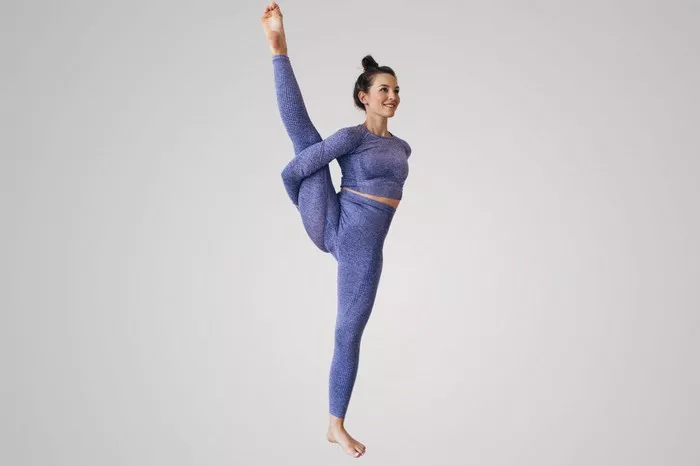Power yoga is a dynamic and physically demanding style of yoga that has gained immense popularity in recent decades. Known for its vigorous approach and fitness-oriented focus, power yoga attracts individuals seeking to combine the mental and spiritual benefits of traditional yoga with the physical intensity of a full-body workout. But what exactly is power yoga, and how does it differ from other types of yoga? Let’s dive into the origins, characteristics, benefits, and considerations of this vibrant practice.
Origins and Philosophy of Power Yoga
Power yoga emerged in the United States in the 1990s, inspired by the ancient Indian practice of Ashtanga yoga. Two American yoga teachers, Beryl Bender Birch and Bryan Kest, are credited with popularizing this style. Both aimed to create a more accessible and adaptable form of Ashtanga, one that retained its vigorous flow but removed the rigid sequence of poses.
While traditional yoga often emphasizes a balance of physical, mental, and spiritual development, power yoga leans heavily into the physical aspect, making it particularly appealing to those with a fitness-focused mindset. Despite its intense pace, power yoga still incorporates core elements of mindfulness, breath control, and presence, staying true to its yogic roots.
Characteristics of Power Yoga
Dynamic and Fast-Paced Flow
Unlike traditional yoga styles such as Hatha or Iyengar, which may focus on holding poses for extended periods, power yoga involves continuous, fluid movements. Sequences are often performed in a “flow,” linking one pose to the next with minimal rest.
Strength and Endurance Building
Power yoga is designed to challenge your physical strength and endurance. Classes often include demanding poses such as planks, chaturangas (low push-ups), and balance-intensive postures like Warrior III.
Customizable Sequences
While Ashtanga yoga adheres to a strict sequence of poses, power yoga allows for flexibility in class structure. Instructors often tailor sequences to target specific muscle groups, ensure variety, or align with students’ fitness levels.
Cardio and Calorie Burning
The high-energy nature of power yoga classes elevates heart rates, making it an excellent cardio workout. This aspect distinguishes it from many other yoga styles and contributes to its reputation as a calorie-burning powerhouse.
Emphasis on Breath (Pranayama)
Breath control, or pranayama, is an integral part of power yoga. By synchronizing breath with movement, practitioners enhance focus and maintain stamina during challenging flows.
Key Differences from Other Yoga Styles
Power Yoga vs. Ashtanga Yoga
Structure: Ashtanga yoga follows a fixed sequence, while power yoga is more improvisational.
Accessibility: Power yoga accommodates varying skill levels and body types, making it more inclusive.
Intensity: Both are intense, but power yoga is often more creative and adaptable to fitness trends.
Power Yoga vs. Hatha Yoga
Pacing: Hatha yoga is slow and meditative, focusing on foundational poses. Power yoga is fast-paced and strength-focused.
Audience: Hatha yoga is often recommended for beginners, while power yoga is geared towards those seeking a physical challenge.
Power Yoga vs. Vinyasa Yoga
Similarity: Both involve flowing sequences, but power yoga tends to emphasize strength, whereas Vinyasa balances flow with breath and alignment.
Intensity: Power yoga is usually more rigorous and fitness-focused.
Benefits of Power Yoga
1. Builds Strength and Muscle Tone
Power yoga engages nearly every muscle in your body. Core-centric poses, arm balances, and standing postures build strength and definition, making it a perfect complement to resistance training.
2. Enhances Cardiovascular Health
The continuous movement in power yoga keeps your heart rate elevated, improving cardiovascular endurance over time. It’s a great alternative to traditional cardio exercises like running or cycling.
3. Promotes Flexibility
Although primarily strength-focused, power yoga involves dynamic stretches that improve overall flexibility. Regular practice can lead to greater mobility and reduced stiffness in muscles and joints.
4. Boosts Weight Loss and Calorie Burn
Power yoga can burn as many calories as some aerobic workouts. Combined with its muscle-toning effects, it’s an effective practice for individuals aiming to lose weight or maintain a healthy body composition.
5. Improves Mental Focus and Stress Management
Power yoga incorporates mindfulness and controlled breathing, which enhance mental clarity and reduce stress. Even during a challenging class, the focus on the present moment helps quiet the mind.
6. Increases Stamina and Energy Levels
By consistently pushing physical limits, power yoga improves stamina and boosts overall energy. It conditions the body to handle prolonged physical exertion more efficiently.
7. Enhances Balance and Coordination
The emphasis on balance poses and transitions sharpens coordination and body awareness. This benefit is particularly useful for athletes and individuals with an active lifestyle.
Who Can Practice Power Yoga?
Power yoga is versatile and can be modified for different fitness levels, but it’s especially well-suited for the following groups:
Fitness Enthusiasts: Those looking for a yoga practice that doubles as a workout.
Athletes: Individuals seeking cross-training opportunities to enhance strength, flexibility, and balance.
Weight Loss Seekers: People aiming to burn calories while enjoying the mental benefits of yoga.
Experienced Yogis: Advanced practitioners wanting to challenge themselves further.
That said, beginners can still benefit from power yoga with guidance and modifications. It’s important to listen to your body and not push beyond safe limits.
Power Yoga Class Structure
A typical power yoga class can last anywhere from 45 minutes to 1 hour and follows this general format:
Warm-Up
The class begins with gentle stretches and basic poses to awaken the body and prepare for the upcoming intensity.
Dynamic Flow
The core of the class involves a series of fast-paced sequences, often incorporating sun salutations, standing poses, and balance challenges.
Strength-Building Poses
Arm balances, core exercises, and strength-focused postures are included to target specific muscle groups.
Cool Down
The class ends with stretches to release tension and improve flexibility. Poses like Child’s Pose or Supine Twists help restore balance.
Relaxation (Savasana)
A brief period of stillness concludes the session, allowing the body to absorb the benefits of the practice.
Things to Keep in Mind Before Trying Power Yoga
Physical Readiness
Power yoga is demanding, so it’s important to assess your fitness level. If you have any pre-existing conditions or injuries, consult a physician before starting.
Hydration
Due to its intensity, power yoga can lead to significant sweating. Stay hydrated before, during, and after the session.
Proper Equipment
Invest in a good-quality yoga mat with excellent grip to prevent slipping. Comfortable, moisture-wicking clothing is also recommended.
Listen to Your Body
While power yoga encourages you to challenge yourself, it’s crucial to recognize your limits. Modify poses or take breaks as needed.
Consistency
Regular practice is key to reaping the full benefits of power yoga. Aim for at least 2–3 sessions per week for noticeable improvements.
Power Yoga in Modern Fitness
Power yoga has evolved into a staple in gyms and yoga studios worldwide. Its ability to seamlessly blend traditional yoga principles with modern fitness demands has made it a favorite among diverse populations. Whether incorporated into a broader fitness regimen or practiced on its own, power yoga offers a holistic approach to health and well-being.
Conclusion
Power yoga is more than just a workout—it’s a comprehensive practice that strengthens the body, sharpens the mind, and uplifts the spirit. Its unique combination of physical intensity and mindful focus makes it an ideal choice for those seeking both fitness and personal growth.
If you’re looking for a workout that pushes your boundaries while fostering inner peace, power yoga may be the perfect fit. Whether you’re an experienced yogi or a fitness enthusiast, this versatile practice promises to leave you feeling strong, energized, and deeply centered.
Related Topics:























